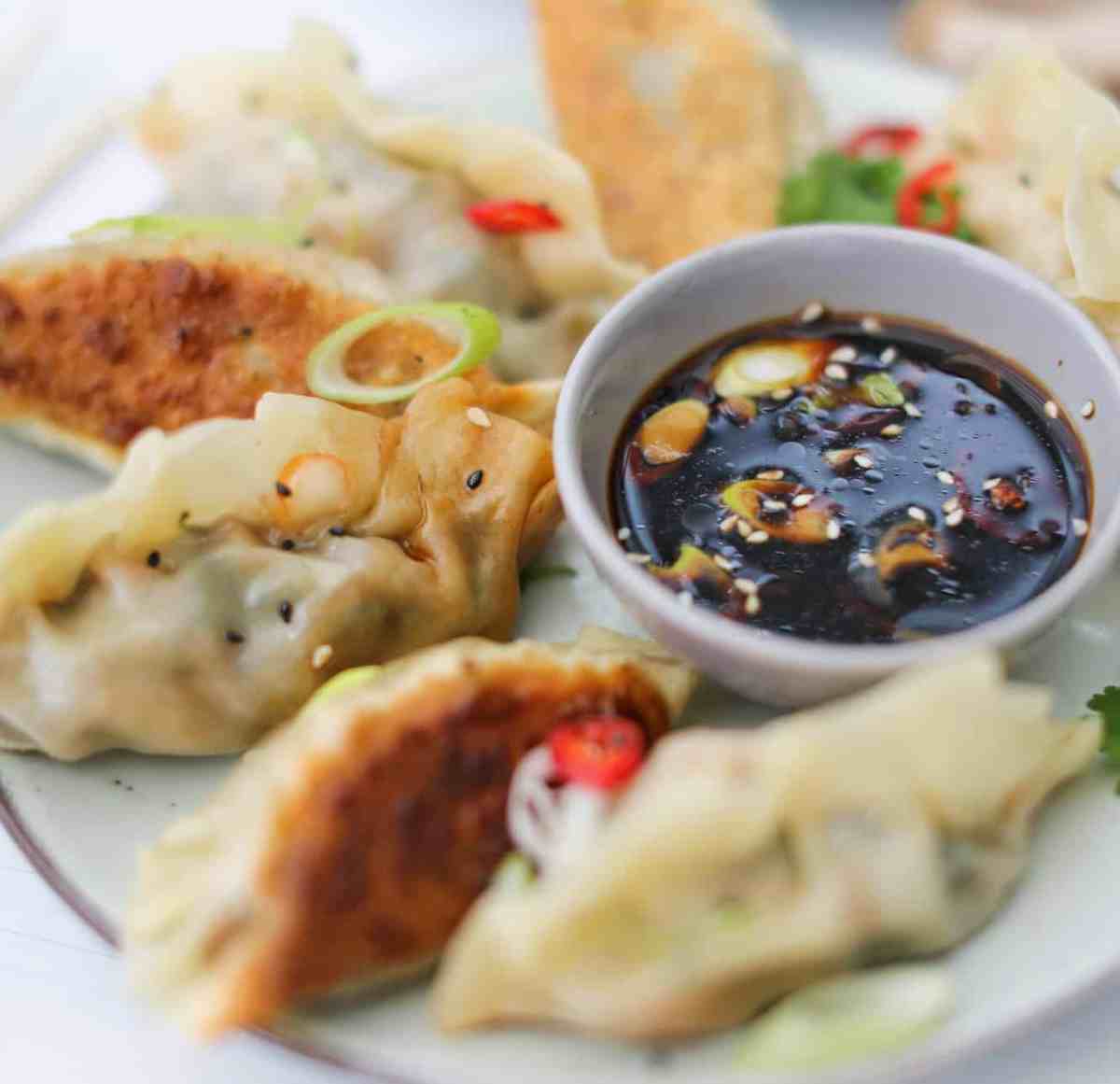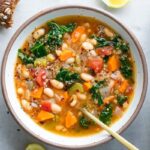Embark on a culinary adventure as we unveil the secrets to crafting delectable vegan Asian dumplings. Imagine the vibrant colors: emerald green edamame nestled beside the earthy tones of shiitake mushrooms, all encased in delicate, translucent wrappers. This isn’t just a recipe; it’s a journey through textures—the satisfying chew of the dough, the juicy burst of the fillings—and a symphony of flavors, from the subtle sweetness of ginger to the savory depth of soy sauce. Prepare to master three unique fillings, each with its own distinct personality, and three expert folding techniques that will transform your dumplings from simple parcels into miniature works of art.
We’ll guide you through every step, from selecting the freshest ingredients to mastering the art of the perfect pleat. Learn three diverse cooking methods – steaming, pan-frying, and boiling – each resulting in a unique textural experience. Discover creative serving suggestions that elevate these dumplings from a simple meal to a culinary masterpiece, complete with vibrant dipping sauces and complementary side dishes. Whether you’re a seasoned chef or a kitchen novice, this guide will empower you to create restaurant-quality vegan Asian dumplings in the comfort of your own home.
Serving Suggestions and Flavor Pairings

Elevating your vegan Asian dumplings from a simple meal to a culinary experience hinges on the perfect accompaniments. The right dipping sauce and side dish can transform the taste and presentation, creating a symphony of flavors and textures. Below are three unique serving suggestions, each designed to highlight the versatility of these delicious dumplings.
Dumplings with Spicy Peanut Sauce and Sesame-Ginger Greens
This vibrant combination offers a delightful balance of sweet, spicy, and fresh flavors. The creamy peanut sauce coats the dumplings, adding a rich depth, while the bright greens provide a refreshing counterpoint.
Spicy Peanut Sauce: In a small bowl, whisk together 1/4 cup creamy peanut butter, 2 tablespoons soy sauce, 1 tablespoon rice vinegar, 1 tablespoon lime juice, 1 teaspoon sesame oil, 1/2 teaspoon sriracha (or more, to taste), and a pinch of sugar. Add water, a teaspoon at a time, until you reach your desired consistency. The sauce should be thick but pourable, clinging beautifully to the dumplings. A drizzle of chili oil adds an extra layer of heat and visual appeal.
Sesame-Ginger Greens: Toss 2 cups of baby spinach or a mix of Asian greens with 1 tablespoon sesame oil, 1 tablespoon soy sauce, 1 teaspoon grated fresh ginger, and a sprinkle of toasted sesame seeds. The ginger adds a pungent aroma and a subtle warmth, complementing the peanut sauce perfectly. The sesame seeds provide a textural contrast and nutty flavor.
Presentation: Imagine a shallow, white bowl filled with glistening dumplings, artfully arranged. A small, separate bowl holds the vibrant, emerald green sesame-ginger greens, and a third bowl contains the rich, reddish-brown spicy peanut sauce. The contrast in colors and textures makes for a visually striking and appetizing presentation. A sprinkle of chopped peanuts atop the sauce adds a final touch of elegance and crunch.
Dumplings with Soy Ginger Dipping Sauce and Quick Pickled Cucumbers
This pairing offers a lighter, more refreshing experience. The tangy pickled cucumbers cut through the richness of the dumplings, while the soy ginger sauce provides a savory, umami base.
Soy Ginger Dipping Sauce: Combine 1/4 cup soy sauce, 2 tablespoons rice vinegar, 1 tablespoon grated fresh ginger, 1 tablespoon mirin (sweet rice wine), and 1 teaspoon sesame oil in a small bowl. The mixture should be well balanced, with a subtle sweetness from the mirin and a sharp bite from the ginger and vinegar.
Quick Pickled Cucumbers: Thinly slice 1 cucumber and toss it with 1 tablespoon rice vinegar, 1/2 teaspoon sugar, and a pinch of salt. Let it sit for at least 15 minutes to allow the flavors to meld. The cucumbers will become slightly softened and infused with a pleasant tanginess.
Presentation: Picture a rustic wooden platter. A neat pile of steaming dumplings sits at the center, surrounded by a small bowl of the glistening soy ginger dipping sauce and a separate dish of bright, translucent pickled cucumbers. The contrasting textures—the soft dumplings, the crisp cucumbers—create visual interest. The platter’s natural tones complement the dumplings’ warm hues and the sauce’s dark color.
Dumplings with a Chili-Garlic Sauce and Edamame Salad
This option offers a bold and flavorful experience. The chili-garlic sauce provides a fiery kick, while the edamame salad adds a touch of freshness and protein.
Chili-Garlic Sauce: Mince 2-3 cloves of garlic and combine them with 2 tablespoons of chili garlic sauce (store-bought or homemade). Adjust the amount of chili garlic sauce to your preferred level of spiciness. The sauce should be vibrant red and fragrant with garlic. A small amount of sesame oil can be added for richness and shine.
Edamame Salad: Steam or boil 1 cup of edamame until tender. Toss with 1 tablespoon sesame oil, 1 tablespoon soy sauce, and a squeeze of lime juice. The simple dressing allows the natural flavor of the edamame to shine.
Presentation: Envision a sleek, black slate serving plate. The dumplings are arranged in a circular pattern, with a small bowl of the fiery chili-garlic sauce nestled in the center. A small side dish contains the bright green edamame salad, its vibrant color contrasting beautifully with the dark plate. The minimalist presentation allows the bold flavors to take center stage.
Recipe Adaptation and Customization
Crafting the perfect vegan Asian dumpling is a journey of culinary exploration, and adapting the basic recipe to suit individual needs and preferences is a key part of that journey. This section provides guidance on modifying the recipe for various dietary requirements and personal tastes, ensuring delicious and satisfying results every time. We’ll explore substitutions for ingredients, adjustments for dumpling size, and techniques for creating gluten-free versions.
Gluten-Free Dumpling Wrappers
Many gluten-free alternatives exist for traditional dumpling wrappers. Substituting requires careful consideration of texture and handling. Using commercially available gluten-free dumpling wrappers is the simplest approach; look for brands specifically designed for this purpose. These wrappers often mimic the texture of wheat-based wrappers closely. Alternatively, you can experiment with making your own wrappers using gluten-free flour blends. A blend of rice flour, tapioca starch, and potato starch often produces good results, though experimentation with ratios may be needed to achieve your desired texture. Remember that gluten-free wrappers can be more delicate, requiring gentle handling during the filling and folding process to prevent tearing. They may also require a slightly shorter steaming or pan-frying time to avoid overcooking.
Vegan Protein Alternatives
The versatility of this recipe allows for easy substitution of vegan protein sources. While the original recipe may call for a specific type of vegan protein, you can easily experiment with others. For instance, instead of using finely chopped mushrooms, you could use finely diced firm tofu, seasoned with soy sauce, ginger, and garlic for a hearty and satisfying filling. Another option is finely shredded jackfruit, which, when cooked, takes on a texture similar to pulled pork, offering a unique flavor profile. Consider lentils or finely ground chickpeas for a different textural experience. Remember to adjust the seasoning to complement the chosen protein.
Ingredient Substitutions
Many ingredients can be swapped without significantly impacting the overall flavor or texture. For example, if you don’t have shiitake mushrooms, cremini or oyster mushrooms offer similar umami notes. Similarly, if you prefer a different vegetable, finely chopped carrots, cabbage, or spinach can be easily incorporated. A touch of sesame oil can be added to compensate for any potential loss of flavor from substitutions. Remember to always taste and adjust seasoning as you go to ensure the perfect balance of flavors.
Adjusting Dumpling Size
Creating larger or smaller dumplings is simply a matter of adjusting the amount of filling used in each wrapper. For larger dumplings, use a more generous spoonful of filling, ensuring that the wrapper is sealed tightly to prevent leakage during cooking. For smaller dumplings, use a smaller amount of filling and fold accordingly. This will also affect cooking time; larger dumplings will require slightly longer cooking times to ensure the filling is heated through. Remember to adjust the number of dumplings accordingly, to maintain the same total serving size. Experimenting with different sizes is a great way to customize your dumplings to your preference and serving style.
From the earthy depths of shiitake and cabbage to the vibrant sweetness of sweet potato and ginger, and the refreshing crunch of edamame and water chestnuts, your culinary horizons expand with each perfectly formed dumpling. Mastering the art of pleating, half-moons, and pouches transforms the process into a meditative craft, while the choice of steaming, pan-frying, or boiling allows for personalized textural exploration. The journey doesn’t end with the cooking; experiment with diverse dipping sauces and side dishes, transforming each serving into a unique sensory experience. With this guide, creating exquisite vegan Asian dumplings becomes not just achievable, but an enjoyable and rewarding culinary adventure.
Question & Answer Hub
Can I freeze leftover dumplings?
Yes! Uncooked dumplings freeze well. Arrange them on a baking sheet, freeze solid, then transfer to a freezer bag for longer storage.
What if my dumpling wrappers tear?
Don’t worry! A little water applied to the tear can help seal it before continuing to fold. Alternatively, use the torn wrapper as a smaller dumpling.
Are there gluten-free wrapper options?
Absolutely! Many stores carry gluten-free dumpling wrappers, or you can make your own using gluten-free flour blends.
How long do cooked dumplings last in the fridge?
Cooked dumplings should be stored in an airtight container and refrigerated for up to 3 days.


